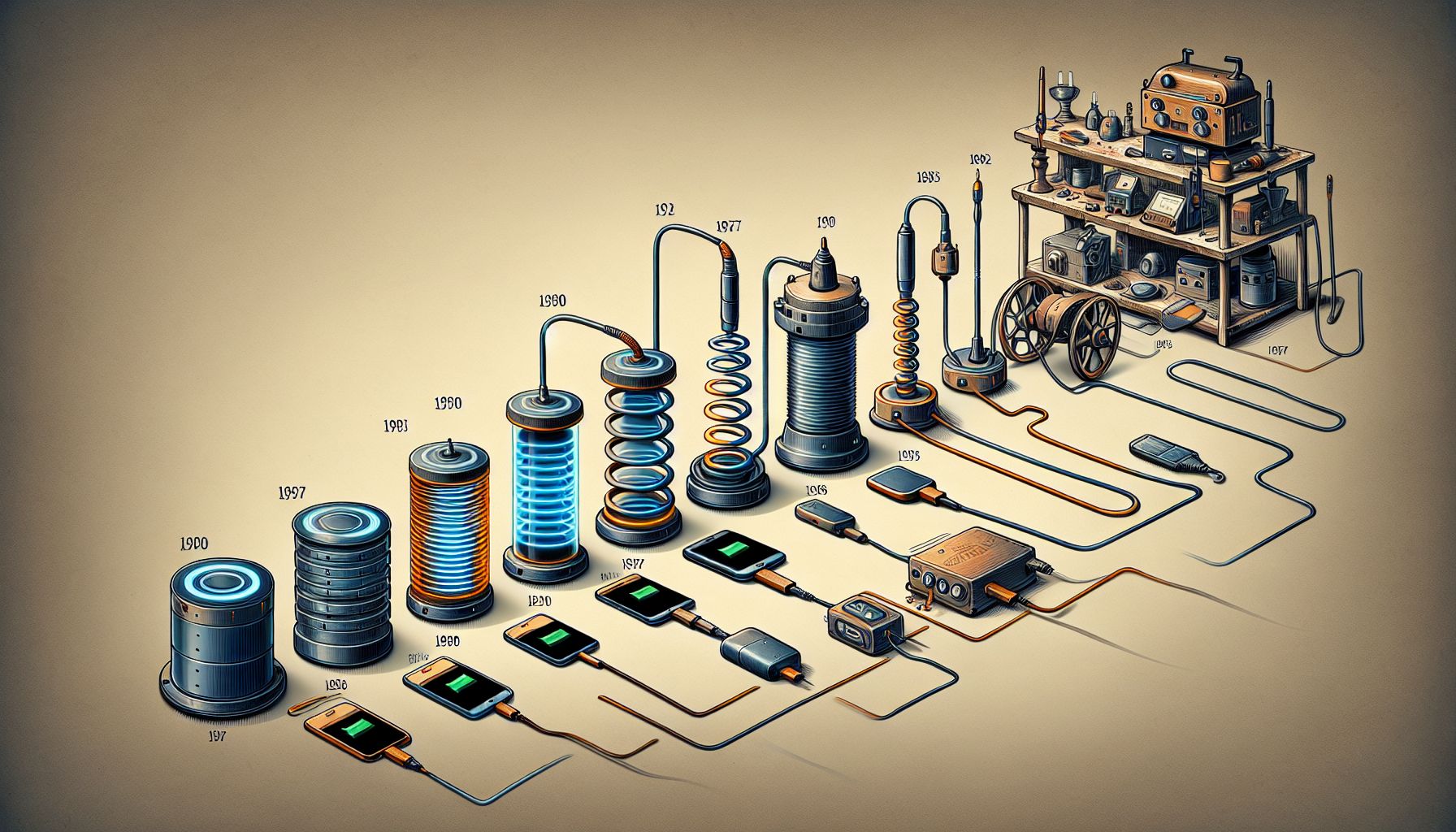📌 Let’s explore the topic in depth and see what insights we can uncover.
⚡ “Imagine a world where running out of battery simply doesn’t exist. This isn’t a scene from a sci-fi movie, but the result of the revolution in wireless charging, and this journey is more fascinating than you might think!”
Hello tech enthusiasts! Today, we’re going to take a trip back in time to track the evolution of a technology that plays a pivotal role in our everyday lives but often goes unnoticed - wireless charging. This technology, which once seemed like magic, has now become a staple in our digital world, making our devices more convenient and our lives a little bit easier. 📱⚡️ Whether you’re a tech guru, a history buff, or just someone who loves a good story, this post will provide an exciting and informative look at the history and progression of wireless charging technology. So, buckle up and get ready for a fascinating journey back in time!
🔌 The Birth of Wireless Charging

"Journey through Time: The Wireless Charging Revolution"
To truly understand the evolution of wireless charging, we need to take a quantum leap back to the 19th century. The idea of transmitting power without wires first originated with the brilliant scientist and inventor Nikola Tesla. In the early 1890s, Tesla began experiments with alternating current and high-frequency magnetic fields, leading him to the invention of the Tesla Coil, which could transmit electricity without wires. However, Tesla’s dream of creating a worldwide wireless energy transmission system wasn’t realized during his lifetime. It took nearly a century for the concept of wireless power transmission to be revisited and developed into what we now know as wireless charging.
📡 The Dawn of Inductive Charging
Fast forward to the 1960s, wireless power transfer started to gain traction again, particularly in the world of electric toothbrushes. Yes, you read that right! The first commercially available wireless charging device was actually an electric toothbrush launched by Braun in 1961. This device utilized a technology called inductive charging, which involves transferring energy between two objects through an electromagnetic field. The principle of inductive charging is simple. It requires two coils - a transmitter coil in the charging station and a receiver coil in the device - to create an electromagnetic field. When the device is brought close to the charging station, the electromagnetic field generates an electric current within the device, charging the battery.
📱 The Era of Qi: Standardizing Wireless Charging
The real breakthrough in wireless charging technology came in 2008 with the establishment of the Wireless Power Consortium (WPC). The WPC introduced the Qi (pronounced ‘chee’) standard, which defined the way devices would use inductive charging. The Qi standard was a game-changer as it brought a much-needed uniformity to the wireless charging industry. It allowed different manufacturers to create Qi-compatible devices and chargers, making it easier for consumers to adopt wireless charging. The introduction of the Qi standard led to a surge in the adoption of wireless charging, particularly in smartphones. Major players like Samsung, Apple, and Google started incorporating Qi wireless charging into their devices, further cementing its place in the tech world.
🚀 The Future of Wireless Charging: Resonant and Radio Frequency Charging
Wireless charging has come a long way since the days of Tesla, and it’s not stopping anytime soon. The technology is constantly evolving, with new and exciting innovations on the horizon. One such innovation is resonant charging, which is an advancement on the traditional inductive charging. While inductive charging requires the device to be in contact with the charger, resonant charging allows for power transfer over small distances. This means you could potentially charge your phone by just placing it near the charger, without any physical contact! Another promising technology is radio frequency (RF) charging, which uses radio waves to transmit power. RF charging can potentially charge devices from several meters away, making it a truly wireless solution. These emerging technologies are set to redefine the way we think about charging our devices, bringing us closer to a truly wireless future.
🧭 Conclusion
The story of wireless charging is a testament to human ingenuity and the relentless pursuit of convenience. From Tesla’s pioneering work to the advent of inductive charging, the establishment of the Qi standard, and the exciting future technologies, wireless charging has undergone a fascinating evolution. As we look forward, the possibilities seem endless. The dream of a truly wireless world, where all our devices are powered without the need for cables or plugs, is becoming more and more of a reality. One thing is for sure - the journey of wireless charging is far from over, and we can’t wait to see where it takes us next! 💡🚀
📡 The future is unfolding — don’t miss what’s next!
